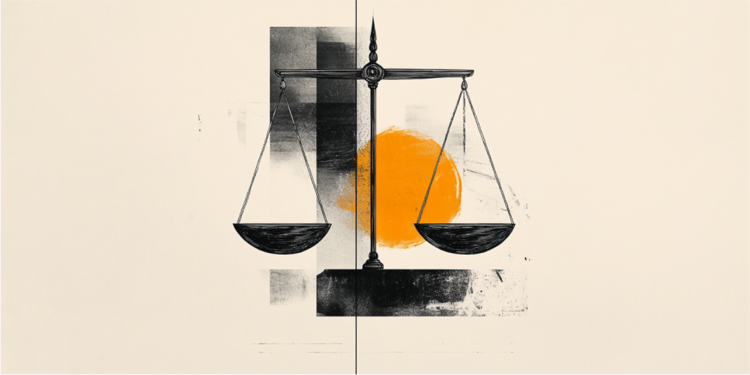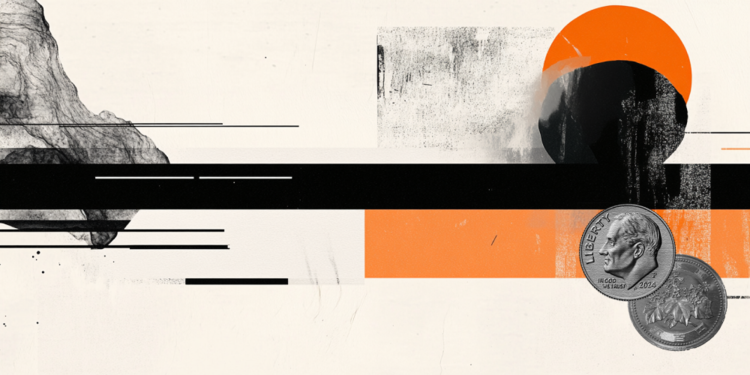Before United States citizens vote for president this November, they choose presidential candidates in a series of primary votes and political conventions.
This is an unstable process that has evolved throughout the country's history and continues to develop today.
Here's what you should know about the 2024 United States primary elections:
What are the US primaries?
It is an election to select candidates, usually from a specific political party, to compete in the general election.
Who is running in the 2024 primaries?
To the Democrats Joe Biden, the incumbent president, is running for re-election, making him the incumbent candidate.
Incumbents rarely face serious competition. Still, there are some Democrats who are challenging him in the party's primary, including Rep. Dean Phillips of Minnesota and writer Marianne Williamson, but who have yet to garner much support, at least according to opinion polls.

To the republicans former President Donald Trump has long been the favorite in the primaries, having an advantage over five other candidates who are still in the race, also according to electoral surveys.
Trump, as a former president, also has some of the power of an incumbent, even though he lost the last general election. This is the first serious campaign by a former president for his party's nomination since Teddy Roosevelt tried and failed to regain the Republican nomination in 1912.
Republicans who are against the businessman are focused on two other pre-candidates: Nikki Haley, former governor of South Carolina, and Ron DeSantis, governor of Florida.
Haley had better results in the state of New Hampshire, and DeSantis focused on Iowa.
Former New Jersey governor Chris Christie, businessman Vivek Ramaswamy and former Arkansas governor Asa Hutchinson are finding it more difficult to gain support.
Who can vote in the presidential primaries?
This varies by state.
But some states have “open primaries,” meaning any registered voter can vote in the Democratic or Republican primaries.
Others have “closed primaries,” meaning that only people registered with a particular political party, usually Republican or Democrat, can vote in that party's primary.
And there are also states that offer voting day registration, which essentially opens up voting to the majority of registered voters.
As for where they are held, primaries are generally held at polling places like any other election.
When do the presidential primaries take place?
The first date on the presidential primary calendar is January 15th although not technically for primaries.
On that day in Iowa, members of the Republican Party will gather at events called political conventions, where they listen to speeches from campaign supporters and then vote for their preferred candidate.
Unlike primaries in other states, these events are overseen by state parties and are not conducted like normal elections.
Democrats will also meet that day in Iowa, but voting for the presidential candidate will be done by mail and will end on March 5.

In some states, presidential primaries are held on one date, and primaries for other offices are held later in the year. See the full calendar through this link, in English.
After Iowa, New Hampshire holds the “first” primaries in the country, in January 23rd although Democrats are not sanctioning the event.
Party members want their first official primaries to take place on February 3, in South Carolina, which is a more racially diverse state, and the first place where Biden won the primaries in 2020.
Next, the Nevada primaries will take place in February 6 .
The calendar spreads out from there. Republicans compete in Nevada party conventions in February 8, and in South Carolina in, February, 24 ,, for example.
Who wins Iowa and New Hampshire usually wins the nomination?
Not necessarily.
In 2020, Biden did not win either Iowa or New Hampshire, but his campaign gained momentum in South Carolina and he won the Democratic nomination and, later, the White House.
In 2016, Donald Trump lost Iowa but won New Hampshire, as did fellow Republican Mitt Romney in 2012.
In 2008, Democrat Barack Obama won Iowa but lost New Hampshire. Also that year, Republican John McCain lost Iowa but won New Hampshire.
The last candidate to win Iowa and New Hampshire and reach the White House was Democrat Jimmy Carter in 1976, although he technically came second in Iowa behind the “discommitters.”
How does choosing a presidential candidate work?
Voters vote for candidates, but they are actually selecting so-called delegates (U.S. electoral figures) for the party conventions, which take place throughout the summer.
Delegates may be distributed through a winner-take-all system, meaning that the leading candidate in a state's primary receives all of that state's delegates, or they may be distributed proportionally to the results of the primary election.
Some states have certain indices, in which each candidate who obtains a certain number of votes – for example, 20% – can be entitled to delegates.

These days, Democrats distribute all their delegates proportionally.
This year's Republican rules largely require states with primaries and caucuses before March 15 to distribute delegates proportionally.
States with primaries and caucuses after March 15 will be able to switch to a winner-take-all format.
When will we know which candidate won the primaries?
It will be necessary to monitor the development of the primaries.
Keep an eye on Super Tuesday in March 5th . While there still aren't enough delegates at stake to secure the nomination, this is the night with the most delegates, where Republicans in 16 states and territories will vote.
It can take until May or June for a candidate to win enough votes to secure their party's nomination.
The last presidential primaries take place in June 4 .
What happens if no candidate gets a majority of delegates?
The majority of delegates are required to be “bound” (the Republican term) or “pledged” (the Democratic term) to a particular candidate addressing the convention.
A very small portion of delegates in certain states and territories on the Republican side are “unbound.” These few delegates can support whoever they want at the start of the convention.
Democrats have “uncommitted” delegates — party bigwigs — but they won’t vote in the first round on the convention floor if they can influence the outcome.
If there is no clear majority winner after the delegates vote, they go to additional rounds of voting, in which bound delegates become unbound, so they can finally select a candidate. This is known as a “brokered agreement”.
However, this event is rare, having last happened in 1952.
How did this process come about?
The holding of primaries has evolved throughout the history of the United States.
Previously, congressional delegations selected presidential candidates. The first election for which there were political conventions for party members was in 1832, when Andrew Jackson won election to the White House.
The first convention was held by the Anti-Masonic Party, which was short-lived and dissolved.
The movement to focus on primary elections and make the system more democratic began after the violence at the Democratic National Convention in Chicago in 1968, when party leaders opted for then-Vice President Hubert Humphrey over anti-war candidate Eugene McCarthy.
Humphrey lost that year's presidential election to Richard Nixon.
Where and when will the 2024 conventions be held?
The Republican National Convention takes place July 15-18 in Milwaukee.
The Democratic National Convention takes place from August 19th to 22nd in Chicago.
Are there primaries that are not so focused on political parties?
Yes, but not for the position of president.
An increasing number of states are experimenting with nonpartisan primaries, in which all voters and candidates participate in a primary election, and the top finishers, regardless of party affiliation, face off on Election Day.
These nonpartisan primaries, used in state Senate races, gubernatorial races and House races, are not used in presidential elections.
California, Nebraska and Washington, for example, use the system in which the top two teams face each other. In Alaska, the four main candidates face each other.
Louisiana has so-called “jungle primaries.” All candidates for local, state, or federal office are listed on the Election Day ballot, and if no candidate wins a majority, the top two finishers participate in a runoff.
Will there be presidential candidates from other parties?
Yes.
O Green Party (Green Party) will likely have a presidential election candidate on the ballot in most states, and the Libertarian Party hopes to be on the ballot in all 50 states.
These parties will select their nominees at their own conventions.
The last time a candidate from another party or who was independent (without affiliation) obtained electoral votes in a general election, however, was in 1968.
Source: CNN Brasil
Bruce Belcher is a seasoned author with over 5 years of experience in world news. He writes for online news websites and provides in-depth analysis on the world stock market. Bruce is known for his insightful perspectives and commitment to keeping the public informed.







